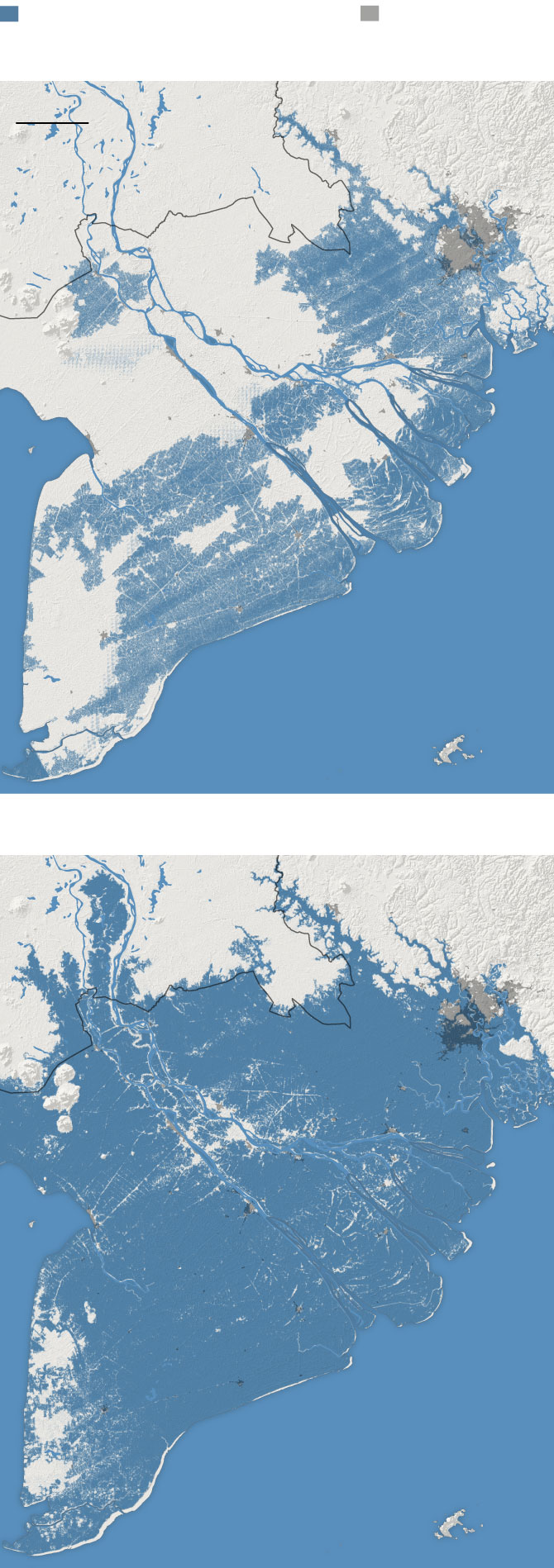
A Quiet Crisis Beneath Our Feet: America’s Urban Centers Are Subsiding
An enlightening study featured in Nature Cities has uncovered a shocking reality: all of America’s major metropolitan regions are gradually sinking. This extensive land subsidence, driven by a mix of natural and human influences, endangers tens of thousands of structures, vital infrastructure, and urban resilience throughout the United States. With rising sea levels and increasingly erratic climate patterns, this unseen geologic transformation is becoming a pressing issue for planners, engineers, and policymakers.
Unparalleled Satellite Insights Illuminate the Extent of Subsidence
The study, spearheaded by Leonard Ohenhen from Columbia Climate School’s Lamont-Doherty Earth Observatory, employed precise satellite-based interferometric synthetic aperture radar (InSAR) technology to chart subtle vertical changes across urban areas. The team evaluated all 28 major U.S. cities with populations exceeding 600,000. This extensive analysis revealed that 25 of these locations are undergoing significant land subsidence, affecting over two-thirds of the area in each impacted city.
What raises particular alarm is not merely the sinking of the land but the unevenness of this descent. Certain sections of cities are subsiding at a quicker pace than others, leading to uneven stress that can damage underground water and gas infrastructure, distort railway tracks, and compromise building foundations.
Texas Takes the Lead in Accelerated Sinking Rates
Texas urban areas are highlighted as the quickest sinking among all cities. Houston, already at risk for flooding, is witnessing over 40% of its territory sink more than 5 millimeters (approximately 0.2 inches) each year, with 12% sinking at twice that pace. In specific isolated neighborhoods, land is dropping up to 5 centimeters (2 inches) annually—sufficient to significantly alter the landscape in just ten years.
Adjacent cities such as Fort Worth and Dallas exhibit similar patterns, underscoring that much of central Texas is particularly susceptible. Other cities with localized areas of rapid decline include New York near LaGuardia Airport, portions of Washington D.C., Las Vegas, and even the urban core of San Francisco.
The Causes Behind the Descent
The study pinpointed several key factors contributing to this slow yet perilous occurrence. Foremost among them is unsustainable groundwater removal. About 80% of the observed subsidence is directly tied to human actions that deplete large underground aquifers, especially in areas prone to drought or experiencing rapid growth. As groundwater is extracted, the sediment layers below compact, leading to the ground above sinking.
But human activity is not the only influencing factor. The ongoing “rebound” of North America from ancient glacial layers, the substantial weight of urban buildings, aggressive oil and gas extraction, and even new construction initiatives all contribute to underground destabilization. Climate change intensifies the situation, with prolonged droughts increasing dependence on groundwater and amplifying long-term risks.
Variable Movement and Infrastructure Threat
The most damaging consequence of land subsidence is not always its rate, but its variability. When different neighborhoods sink at varying speeds—a phenomenon known as differential motion—cracks develop in roads, bridge supports lean, pipes break, and entire building foundations shift unnaturally.
The recent research estimates that around 29,000 buildings in major U.S. cities are located in areas undergoing significant differential sinking. While only 2% of U.S. building collapses between 1989 and 2000 were officially ascribed to subsidence, 30% had unidentified causes—indicating that this issue may be an underappreciated danger.
Cities Facing the Most Relative Risk Include:
– San Antonio: 1 in every 45 buildings
– Austin: 1 in 71
– Fort Worth: 1 in 143
– Memphis: 1 in 167
In addition to structural integrity, subsidence also heightens urban flood risks. In low-lying areas like New York, Houston, and San Jose, a sinking land surface amplifies the dangers posed by heavy rainfall, hurricanes, and rising sea levels. Disturbingly, eight of the cities most severely impacted by subsidence have witnessed over 90 significant flood events since 2000.
Approaches for Stability and Adaptation
The positive aspect: we now possess the data and understanding to formulate focused solutions. However, there is no one-size-fits-all remedy. Different patterns of subsidence necessitate tailored strategies that align with local geologies and infrastructure types. Examples include:
Flood-prone areas:
– Create artificial wetlands and green retention basins to absorb floodwaters
– Upgrade stormwater drainage systems
– Explore strategic land elevation projects
Regions with differential land motion:
– Strengthen or retrofit at-risk structures
– Revise zoning regulations and limit high-density development in high-risk zones
– Adopt dynamic building codes based on geospatial sinking data
Areas afflicted by groundwater extraction:
– Transition to more sustainable water-use practices
– Recharge aquifers through managed aquifer recharge (MAR) programs
– Enforce fiscal or legal limits on groundwater extraction
“We must pursue solutions,” stated Ohenhen.